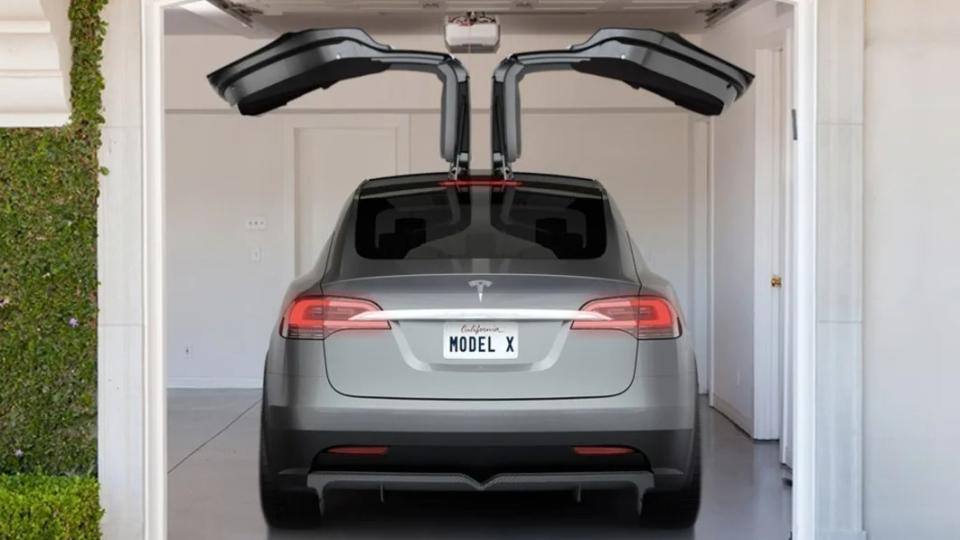Even Tesla knows swinging doors are bad

You won't hear me singing Tesla's praises very often. I have no problem with electric cars; in fact, there are a few I even enjoy, though Tesla's sloppy execution leaves a lot to be desired. But, to give credit where credit is due, I have to hand the company's engineers one thing: The Model X's Falcon doors, goofy and unnecessarily complex though they may be, are the right doors for a future family hauler. Why? Because they don't swing.
Of the possible ways you could open a car door, the conventional swing-out door is the single worst possible solution for a family car. They're large and unwieldy for children and impossible to situate with your hands full of toddler (or whatever it is you happen to be hauling). An unexpected gust of wind can yank it out of your hands — likely in the direction of something expensive — and even if there's nothing to hit, there's a chance the door's momentum could damage its own hinges or, worse, tweak the actual door frame.
They're equally impractical when it comes to implementing technological helpers. One-touch auto-open/close sliding doors are borderline no-brainers, but such simple solutions have no place on swinging doors because (go figure) they might hit something. We've known that swinging doors are not ideal on a family car for decades.
"If it's so obvious that they're crap, why don't we use something else, smart guy?"
Well, vans have been offered with sliding doors for about as long as there have been vans. Admittedly, sliding doors have drawbacks even relative to swing-up doors. Their tracks need to be kept clean and free of debris, and if the car gets bent out of shape by an accident, the additional attachment points could make a sliding door more likely to bind up. They also carry with them some serious design baggage. That slider can't just hang off the side of the car the way a hinged door can when it's open; it actually has to slide somewhere.

 Yahoo Autos
Yahoo Autos 
